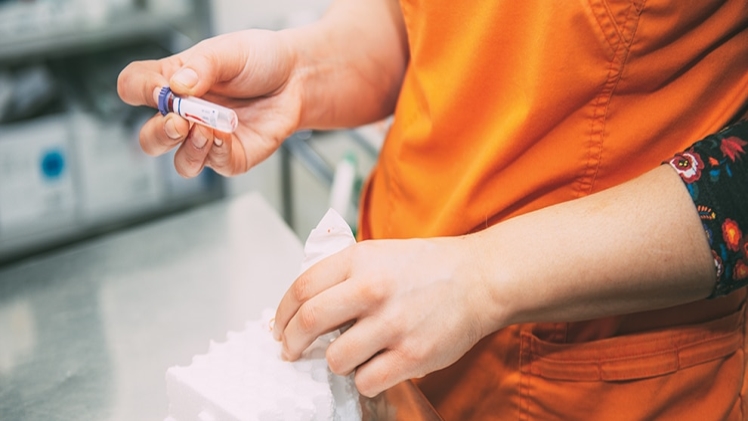HEALTH
Navigating Compliance and Regulations in Blood Sample Collection Boxes: Ensuring Integrity in Healthcare

In the intricate world of healthcare, blood sample collection plays a pivotal role in diagnostics, research, and patient care. Blood sample collection boxes, often integrated with advanced features, are integral to this process, ensuring the safe, hygienic, and compliant collection and transport of blood samples. This article delves into the world of compliance and regulations surrounding blood sample collection boxes, highlighting their importance in maintaining patient safety and sample integrity, with a focus on the blood containers used in blood banks.
Understanding Compliance and Regulations
Compliance and regulations in the realm of blood sample collection boxes are a set of guidelines, standards, and protocols established by regulatory bodies and healthcare authorities. These directives are designed to ensure that blood samples are collected, stored, and transported in a manner that guarantees patient safety, prevents contamination, and maintains sample integrity.
Key Aspects of Compliance and Regulations
1. Patient Safety: The foremost concern of compliance is patient safety. Blood sample collection boxes must adhere to safety guidelines to prevent exposure to pathogens, reduce the risk of contamination, and safeguard healthcare professionals during collection and transportation.
2. Sample Integrity: Regulations focus on maintaining the integrity of collected blood samples. This involves preventing temperature fluctuations, minimizing exposure to light, and ensuring proper labeling to avoid sample mix-up.
3. Infection Control: Compliance mandates robust infection control measures, including the use of leak-proof and biohazard-labeled containers within blood sample collection boxes. This reduces the risk of cross-contamination and the transmission of infectious diseases.
4. Labeling and Tracking: Proper labeling and tracking of blood samples are essential for accurate identification and traceability. Blood sample collection boxes must facilitate clear labeling to prevent mix-ups and ensure samples are traceable throughout their journey.
5. Quality Assurance: Compliance requires manufacturers of blood sample collection boxes to adhere to quality assurance practices. This involves testing and validating the boxes’ performance, durability, and safety under various conditions.
6. Material Safety: Regulations stipulate that materials used in the construction of blood sample collection boxes should be non-toxic, non-reactive, and suitable for the transportation of biological materials. They must also be resistant to spills and leakage.
7. Temperature Control: For blood samples that require specific temperature conditions, compliance dictates the inclusion of appropriate temperature-control mechanisms in collection boxes, ensuring sample stability during transport.
Blood Containers in Blood Banks: Ensuring Compliance
Blood banks play a critical role in healthcare, collecting, storing, and distributing blood and blood products for transfusions and medical procedures. Compliance and regulations regarding blood containers used in blood banks are especially stringent due to the sensitivity of the contents. Key points to consider include:
1. Blood Container Material: Blood containers must be made of medical-grade, non-reactive, and non-toxic materials that do not compromise the quality of blood or blood products.
2. Anticoagulants and Preservatives: Compliance mandates the use of approved anticoagulants and preservatives in blood containers to prevent clotting and maintain the viability of blood components.
3. Sterility and Aseptic Techniques: Blood containers must undergo rigorous sterilization processes and aseptic filling techniques to prevent contamination during collection and storage.
4. Leak-Proof Design: Blood containers used in blood bank must be designed to be leak-proof, preventing any spillage or exposure to healthcare professionals and patients.
5. Compatibility with Testing: Blood containers should be compatible with the various tests performed on collected blood samples, ensuring accurate and reliable results.
6. Storage and Transportation: Regulations guide the design of blood containers to facilitate secure storage and transport, minimizing the risk of sample degradation or breakage.
7. Traceability and Labeling: Blood containers must feature clear labeling and traceability information, ensuring that blood products can be accurately identified, tracked, and matched with patient records.
Benefits of Blood Containers in Blood Banks
Safe Blood Products: Blood containers designed in accordance with regulations ensure the safety of blood products, preventing contamination, breakage, and exposure to external elements.
Maintaining Blood Component Viability: Regulatory adherence mandates the use of approved anticoagulants and preservatives. This ensures the viability of blood components, contributing to successful transfusions and treatments.
Minimized Wastage: Blood containers designed for secure storage and transport minimize the risk of sample degradation or breakage, reducing wastage and conserving valuable blood products.
Enhanced Traceability: Clear labeling and traceability information on blood containers facilitate accurate tracking, matching, and documentation of blood products, promoting patient safety.
Streamlined Processes: Blood containers designed to support sterile and aseptic techniques streamline blood collection and storage processes, reducing the risk of contamination and ensuring high-quality blood products
Conclusion
Compliance and regulations in blood sample collection boxes and blood containers are vital components of patient-centered healthcare. They are not only designed to protect patients and healthcare professionals but also to ensure the accuracy and integrity of blood samples collected for diagnostics, research, and treatment. The careful adherence to these regulations guarantees that blood sample collection boxes and blood containers meet the highest standards of safety, quality, and efficacy. As technology advances and healthcare practices evolve, maintaining compliance will continue to be a cornerstone in the relentless pursuit of excellence in healthcare delivery.
Harper Harrison is a reporter for The Hear UP. Harper got an internship at the NPR and worked as a reporter and producer. harper has also worked as a reporter for the Medium. Harper covers health and science for The Hear UP.










